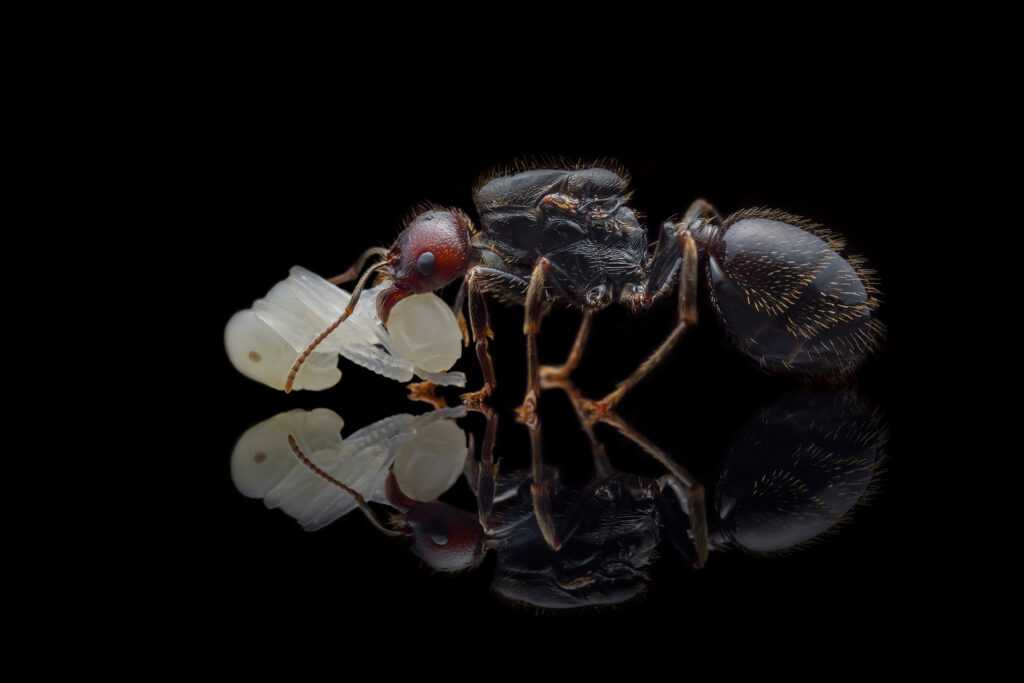Pheidole protea: The Aggressive and Fast-Multiplying Ant Colony
Welcome to the world of Pheidole protea, a fascinating ant species known for its aggressive nature, rapid growth, and beautiful polymorphism. In this detailed product description, we will explore the colony type, size, development speed, nutrition, and environmental requirements of Pheidole protea. Whether you are a beginner ant keeper or an experienced enthusiast, these ants are sure to captivate your interest and provide an exciting addition to your collection.
Colony Type and Size
Pheidole protea colonies are polygynous, meaning they have multiple queens. With a potential colony size of up to 10,000 individuals, these ants are highly populous and can create a bustling community within their habitat. The intricate social structure of the colony is a spectacle to observe, as these ants work together in harmony to support their queen and ensure the survival of their offspring.
Development Speed
One of the standout features of Pheidole protea is their fast development speed. From the moment you introduce a young colony to its new environment, you can witness the incredible growth and expansion of the colony in a relatively short period. This rapid development adds an extra level of excitement and engagement to ant keeping, as you observe the colony flourish and establish its presence.
Size and Appearance
Within the Pheidole protea colony, you will encounter ants of various sizes and roles. The queen, the mother of the entire community, measures between 7 and 9 mm in length. The workers, responsible for foraging and maintaining the nest, range from 3 to 4 mm in size. Majors, the larger ants designated with specialized tasks, can reach a size of 4 to 7 mm.
In terms of color, Pheidole protea ants exhibit varying shades of brown, adding to their aesthetic appeal. The polymorphism within the colony, where ants of different sizes and roles coexist, provides a visually intriguing spectacle and further highlights the species’ beauty.
Nutrition
Proper nutrition is crucial for the health and well-being of your Pheidole protea colony. These ants are primarily insectivores, with a particular preference for food insects such as cockroaches and crickets. Providing a variety of food sources ensures a balanced diet for the ants. Alongside live insects, offering syrups (water or honey-water mix in a ratio of 4:1/3:1/2:1), fruits, vegetables, jelly, and cooked chicken without salt can satisfy their nutritional needs.
Humidity and Temperature Requirements
Paying attention to the humidity and temperature levels within the ant habitat is essential for the thriving of your Pheidole protea colony.
- Humidity: Maintaining a humidity level between 50% and 70% in the arena, where the ants forage, and between 50% and 80% in the nest area ensures a suitable environment for their activities and overall well-being.
- Temperature: Providing a temperature range of 21 to 30 °C in the arena and 24 to 30 °C in the nest area fosters optimal conditions for the ants’ daily routines, including foraging, colony expansion, and brood development.
Recommended Nests for Breeding
When selecting a suitable nest for breeding Pheidole protea ants, it is important to consider their unique requirements. Recommended nest materials include acrylic, cork, plaster, and aerated concrete. These materials offer a combination of durability, insulation, and easy maintenance, allowing you to observe the ants’ behavior within the nest while providing a safe and comfortable environment for their growth.
Now that you are acquainted with the captivating features and requirements of Pheidole protea, you can confidently embark on your journey of ant keeping. As you provide the optimal conditions and watch their colony thrive and expand, you will undoubtedly appreciate the aggressive nature, rapid development, and beautiful polymorphism of these remarkable ants. Start your Pheidole protea colony today and witness the wonders of their enchanting world!

















Reviews
There are no reviews yet.